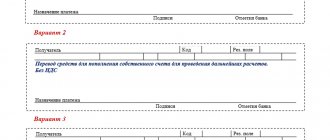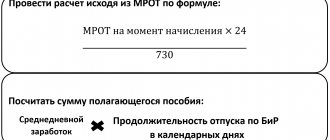According to Russian legislation, responsibility for compliance with safety standards rests with employers. Which obliges the latter to conduct labor safety briefings with hired workers to teach them the general basics of safety and specific behavior in the workplace. In this article we will look at what types of labor safety briefings are required to be carried out as part of on-the-job training and their regularity. We will also briefly describe how the process is organized and the issues considered.
What is important to know?
In the introductory part, we have already mentioned the personal responsibility of the employer and the responsibilities assigned to him for compliance with labor protection standards (hereinafter referred to as OSH) at the enterprise. This requires the management of the enterprise to organize both general and targeted briefings for the safe performance by employees of their work duties. Instructions are carried out with all employees, without exception, in accordance with the established standards, regardless of the form of ownership of the organization and its type of activity. This provision also applies to seconded persons and anyone who enters the enterprise for the first time.
This event can be carried out individually for each employee or collectively, depending on the type of instruction and internal regulations. Responsibility for the procedure for conducting briefings rests with the occupational safety commission, which should be headed by a person who is part of the organization’s management (director, enterprise engineer, etc.). For small teams, it is possible to introduce a special staffing unit of a specialist who is responsible for the frequency of safety briefings.
In practice, management and chief engineers rarely directly carry out such activities; they delegate these responsibilities to the labor protection service or responsible persons who have undergone special training.
At enterprises, as well as in organizations and companies, appropriate local acts must be issued that regulate the procedure for labor protection measures, in accordance with the standards of current legislation.
Who conducts on-the-job training?
Depends on the type of instruction:
- the induction is carried out by an occupational safety specialist (see “How to become an occupational safety specialist”), or another employee who is assigned such responsibilities by order of the manager;
- primary, repeated, unscheduled and targeted are carried out by the one who supervises the work: foreman, foreman, teacher, etc. It is necessary that this person undergo occupational safety training at an accredited training center or at an enterprise if a commission has been created there to test knowledge of occupational safety requirements (for more details, see “Procedure for occupational safety training at an enterprise in 2021: terms, rules, organization”) .
Complete training and receive a certificate of occupational safety specialist Submit an application
Regulatory acts
Taking into account the fact that occupational safety includes many aspects (norms, standards, rules, etc.), each component must be approved by the relevant regulations of varying degrees of subordination. Currently, the occupational safety sector is regulated by the following legislative and by-laws and industry acts:
- Labor Code (Article 212, 214 of the Labor Code of the Russian Federation).
- Federal legislation, in particular, laws No. 125 (dated July 24, 1998) and No. 426 (December 28, 2013).
- Resolution of the Ministry of Labor of the Russian Federation 13-01-2003-N-1-29, Orders, GOSTs, in particular GOST 12.0.004-90, GOST 12.0.004-2015 and GOST 12.0.230-2007, SNiPs, as well as other by-laws.
- Local acts and production instructions adopted by the enterprise and not contradicting the above standards.
Standard instructions on labor protection: sample 2021
For more than fifteen years, ministries and departments have refused to develop standard instructions on labor protection, since their use was logical only in a planned economy, with the same equipment of workplaces.
Expert opinion
Mikhailov Vladislav Ivanovich
Lawyer with 6 years of experience. Specializes in family law. Knows everything about the law.
In this case, a labor protection specialist can develop a sample layout of the instructions and send it to the heads of departments so that they draw up all sections of the instructions according to one sample.
Sample labor safety instructions
- home
- About company
- Our services
- Articles
- Question answer
- Contacts
Labor safety briefings: procedure and timing
These activities, according to current standards, are usually divided into the following types: introductory, primary, repeated, unscheduled and targeted. Let us consider in detail the procedure for carrying out the listed activities.
Types, procedure and timing of briefings
Introductory
Conducting induction training is mandatory for persons entering work, business travelers, as well as employees of third-party organizations performing various types of work on the territory of the enterprise. This requirement also applies to those undergoing internship or industrial training (practice). They must be given prior instructions.
Procedure for conducting induction training
In other words, introductory training in HSE (safety) and fire safety (fire safety) must be given to everyone who has gained access to the territory of the enterprise, regardless of whether they are directly related to production activities or not. The event is carried out by a specialist approved by the relevant order of the employer.
Primary
Conducting initial briefing is the responsibility of immediate supervisors. This event is carried out at the workplace and is mandatory in the following cases:
- Before a new employee hired by the enterprise performs his duties.
- With an employee of an enterprise transferred from another workshop, site or division.
- When performing a new type of work.
- If an employee of another enterprise is sent to the site or a temporary worker is hired.
- Before carrying out work by construction crews working on the territory of the production site.
- Upon admission of interns, students and students for practical training.
The procedure for conducting initial briefings
The programs and texts of initial briefings must contain information on labor protection and safety, taking into account professional specifics, as well as the basics of fire safety.
Repeated (periodic)
According to the established procedure, this event should be carried out every six months. All employees who have previously listened to primary instructions at production sites and divisions of the enterprise must take it.
Procedure for repeated briefings
The head of the unit, section or other immediate superior is appointed responsible for conducting repeated briefings. At the end of the event, an oral test of knowledge of occupational safety, health and safety requirements is carried out, after which a corresponding entry is made in the registration log and certified with the obligatory signatures of the person being instructed and the instructor.
They undergo repeated instruction both individually and collectively, if the event is intended for employees of the same professional field. At the event, it is recommended to consider cases of violation of labor protection standards and basic safety regulations, if any.
Unscheduled
To carry out this event, regulatory documents provide for the following cases:
- Changes in current norms, rules or requirements for labor protection, safety or industrial safety, which must be immediately notified to employees of the enterprise.
- Modernization of equipment or changes in production technology.
- An incident caused by a violation of safety standards and requirements, labor protection or labor discipline. As a rule, after this, employees undergo an extraordinary knowledge test.
- Obtaining an order from supervisory authorities or other regulatory organizations on the need to carry out an unscheduled event.
- A forced break from work for a period of more than two months for ordinary activities or more than a month if the specialization involves increased danger.
The procedure for conducting unscheduled (extraordinary) briefings
These activities are similar in their main aspects to periodic ones, but attention is focused on the reason for the unscheduled conduct. The content of unscheduled briefing is determined by the purpose of its conduct.
Please note that receipt of unscheduled instructions is not reflected in the schedule of regular (periodic) events, but must be recorded in the journal. The content of unscheduled briefing directly depends on the purpose of its implementation.
Target
Such an event is envisaged to be carried out in cases where one-time work is planned, for which a special permit, order or other permits are required. The most typical example is the elimination of the consequences of a natural disaster or man-made emergency.
When is targeted training carried out?
There are also less tragic reasons for receiving new introductions. This may be work that is not directly related to the main professional activity, for example, loading and unloading equipment. A person designated as the responsible manager is responsible for completing training in safe techniques and methods of performing work at a new location. Upon completion of the briefing, an oral test of the acquired knowledge is carried out, about which a corresponding entry is made in the accounting journal and, if required, in the work permit. Signatures of the instructor and those being instructed are required [ ].
Guide: instructions and labor protection
From January 1, 2021, some acts and certain provisions of some acts of the Government of the Russian Federation are declared invalid, and acts and certain provisions of acts of federal executive authorities containing requirements, compliance with which is assessed during the implementation of federal state supervision over compliance with labor legislation and other regulatory legal acts, are repealed , containing labor law standards, and federal state control (supervision) in the field of social services. See Decree of the Government of the Russian Federation dated August 4, 2020 N 1181. Changes will be taken into account in the material when it is updated.
Continue reading in ConsultantPlus
The employee’s immediate supervisor is responsible for conducting on-the-job training. The number of classes depends on the complexity and danger of production or other non-productive activities in which the organization is engaged. An employee who has successfully completed the training can begin work.
Based on the nature and timing of the briefings conducted at the workplace, they are divided into:
- introductory;
- primary;
- repeated;
- target;
- unscheduled.
Let's talk about each of them in more detail.
Inadmissibility to perform work
During an oral inspection, it may be discovered that the employee did not understand the information received about labor protection and safety standards. Such a person cannot be allowed to perform his duties until he undergoes repeated instructions. According to standard production instructions, an order is issued for the enterprise, which indicates the reasons why a certain person cannot be allowed to work independently.
No payroll will be processed until clearance is obtained. A detailed description of this provision can be found in the Labor Code of the Russian Federation.
Frequency of revision of instructions and their validity period
The instructions require revision if:
- there was a change in the technological process
- replacement of production equipment was required
- personal or collective protective equipment has changed
- the materials and (or) raw materials used in production have changed, as a result of which the level of factors specified in the instructions that affect workers has changed
When introducing new jobs, instructions should be developed no later than the new employee starts work. Therefore, if the technological process has not been carried out at the workplace before, before the work begins, employees must be trained on the new instructions.
The validity period of occupational safety instructions is not established by law. The employer has the right to do this independently. At the same time, for electrical technical personnel, the period for reviewing instructions is once every 5 years.
Sample list of introductory briefing questions
The program for introductory instructions is developed by enterprise managers or a designated service, in particular, the labor protection department. The list of issues under consideration can be found in Appendix 3 to GOST 12-0-004-90. The text of the introductory briefing is approved by the employer (manager) and the chief engineer of the enterprise, after which it is registered. As a rule, the questions under consideration contain the following information:
- Data about the organization and main activity (production features).
- Basic provisions on labor protection, safety, as well as part of the introductory fire safety briefing.
- Excerpt from the employment contract, which stipulates working hours, break schedules, social security, requirements for the employee, etc.
- Inner order rules.
- Data on the locations of various services and production facilities.
Registration of completion of induction training must be recorded in a log. The content of introductory briefings necessarily includes consideration of various hazards inherent in this production, which can lead to serious consequences, including a threat to life. It is recommended to have information posters on occupational safety, health and safety in the room where the training is carried out.
Re-briefing
It is carried out by the immediate superior in the following cases:
- if an emergency situation arises, during which it turns out that employees lack knowledge in the field of occupational safety and workplace safety;
- after some time to update employees' knowledge.
As a rule, all workers undergo repeated training at the workplace, the frequency of which should be at least once every 6 months. It does not matter their qualifications, education, experience, or the nature of the work performed.
Workers whose work is associated with high-risk equipment must also be given repeated instructions on labor protection, the frequency of which is once every 3 months.
At the end of the training, the instructor conducts an oral debriefing to ensure that the employees have mastered the new knowledge.
Sample list of questions for initial training
The information contained in the program of primary instructions for employees of a certain section or workshop is processed at the first stage by the immediate manager of the department. After this, the compiled text is reviewed by the labor protection service or the employer or an authorized person.
A correctly composed text should not only reflect current norms and requirements, but also take into account the specifics of a given production unit, as well as the characteristics of the employee’s profession. First of all, it is necessary to proceed from the occupational safety requirements, taking into account operational standards and technical documentation. You can familiarize yourself with the recommended list of questions in Appendix 5 to GOST 12-0-004-90. The text should reflect the following information:
- Data on the specifics of the equipment used on the site and the technological cycle.
- Information on how to properly organize a dedicated workplace, taking into account occupational safety, health and safety requirements.
- If there are dangerous zones in the mechanism of a machine or other equipment, pay attention to them.
- Consider the possibility of blocking equipment, operation of alarm systems, etc.
A complete list of questions for certain professions is given in regulatory documents. After workers have completed the initial training, an oral survey can be conducted to determine their knowledge of basic production instructions. If the test result is positive, a registration is made in the logbook, which indicates that special training in safety standards was carried out in accordance with the requirements of current norms and standards. After this, permission to independently perform their duties is issued by order, after which you can begin to use the skills of safe working methods.
Related articles:
- The damaging effect of electric current on the human body
- Safe exit from the step voltage zone
Unscheduled briefing
Such instruction is carried out if one of the following circumstances occurs:
- There have been changes in labor protection legislation or regulations containing labor protection requirements;
- There have been changes in technological processes, or the company’s equipment has been modernized;
- There was a violation of labor protection requirements that resulted in a serious consequence, for example, an accident or accident;
- When the manager decides;
- At the request of state supervision authorities;
- During breaks in work (a break of more than 30 days - for workers in dangerous or harmful conditions, a break of more than 2 months - for all workers).
Unscheduled training is carried out both for one employee and for a group of them united by one profession. As a rule, to conduct such instruction, programs that were developed for initial instruction are used.









